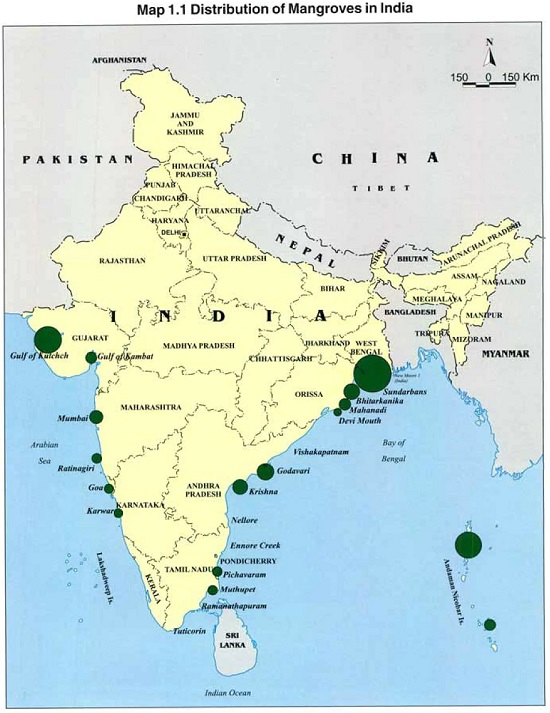Contents
- The judiciary and migrant workers
- Submerged mangrove forests are scientific wonders
THE JUDICIARY AND MIGRANT WORKERS
Focus: GS-II Social Justice, Governance
Introduction
Millions of stranded workers, facing an acute shortage of food and cash, have desperately tried to return home.
Five weeks after the lockdown was imposed, the government finally introduced measures to enable stranded migrants to return home — a process which is ongoing, but which has not stopped thousands of others from continuing to walk back home.
Court’s response on petitions to take action for Migrants
On 15th May 2020, dismissing a petition which asked that the Centre be directed to identify and provide food and shelter to migrant workers returning home, the Supreme Court said it was a matter for the states to decide.
The Court, it added, could not monitor who was walking or not walking, neither could it stop them.
High Courts on Plight of Migrants
In the backdrop of workers having to wait for as long as 19 hours to board trains, the Gujarat High Court (HC) observed that there was lack of coordination among departments and asked the government to be more sensitive to the plight of the most “downtrodden, underprivileged and weaker sections of society”, and instil confidence in them
The Karnataka HC has also done well in observing that workers can’t be deprived of the opportunity of travelling home because of their inability to pay fares. India’s poorest need help.
What could the Supreme Court have done?
It could have done more to order relief and protective measures; and it could have ensured strict monitoring of the process of identification of migrant workers, provision of food and shelter, and their transport.
The government has to do its bit. But the courts can help, with more sensitivity and direction.
-Source: Hindustan Times
SUBMERGED MANGROVE FORESTS ARE SCIENTIFIC WONDERS
Focus: GS-III Science and Technology
Mangrove Forests: Presence and Significance
- Mangrove forests comprise the interface between wetlands and sea grass meadows along a vast expanse of tropical shorelines all over the world.
- They also occur along bays, estuaries or mouths of rivers by these shores.
- Mangroves are present worldwide on various shorelines between approximately 25°N and 25°S latitude.
- Mangrove forests are one of the greatest sources of biodiversity on this planet.
- They have a rich underwater component, a surface component and an aerial component.
- Mangrove communities include fish, insects, shellfish, birds of many species, saltwater crocodiles, monkeys, algae and fungi.
- Many organisms, especially fish, spend their early years in the protection of the mangroves and their intricate below and above-ground root systems.
How are Mangrove Forests Useful?
- Mangroves, along with sea grasses and wetlands, comprise the ‘blue carbon’ ecosystem of stored carbon in sediments along many tropical and subtropical coastal zones.
- Their complex aerial and submerged root systems moderate current flows and the canopies moderate wind flow — they are the interface between the wetlands and sea grass communities for the continental flow of water and solutes into the ecosystem.
- Mangroves also supply fuelwood and other forest products, like food and medicine, for people.
- And, in addition to the nutrition they give us, mangroves protect us — along with other trees and forests, mangroves sequester a sizeable amount of carbon to offset greenhouse gas emissions created by human activities.
- When mangrove trees die of natural causes, they generally fall into the sea and the carbon may be stored in the sediment on the sea floor for long periods of time.
Types of Mangrove Trees
- The term ‘mangrove’ is used to refer to a whole community of trees and shrubs, which are not closely related.
- The Mangrove trees have all adapted to harsh coastal environments of saline, brackish waters and low oxygen conditions.
- There are over 100 species of trees and shrubs designated as mangroves.
- However, there are three classic groups of mangroves — the red mangroves (Rhizophoraceae), the black mangroves (Acanthaceae) and the white mangroves (Combretaceae).
Mangrove Forests in India
- The deltas of the Ganges, Mahanadi, Krishna, Godavari, and Kaveri rivers contain mangrove forests. Backwaters in Kerala have high density of mangrove forest on the shores.
- consist of 46 species (4 of which are natural hybrids) belonging to 22 genera and 14 families, representing about 57% of the world’s mangrove species.
- The Sundarbans is the largest mangrove region and the LARGEST single block of tidal halophytic mangrove forest in the WORLD.
- The Sunderbans in the Ganges-Brahmaputra delta extend from the Hooghly River in West Bengal to the Baleswar River in Bangladesh, covering an area of about 10,000 km2 (3,900 sq mi). This area comprises closed and open mangrove forests, agriculturally used land, mudflats and barren land.

As per the ISFR (India State of Forest Report) 2019 the Mangrove cover in the country has increased by 54 sq km (1.10%) as compared to the previous assessment.
Click Here for the Infographic and Details of ISFR 2019
The mangroves do so much for the planet — but we are losing them very disturbingly and rapidly to oil spills, pollution and shoreline development.
-Source: Times of India




